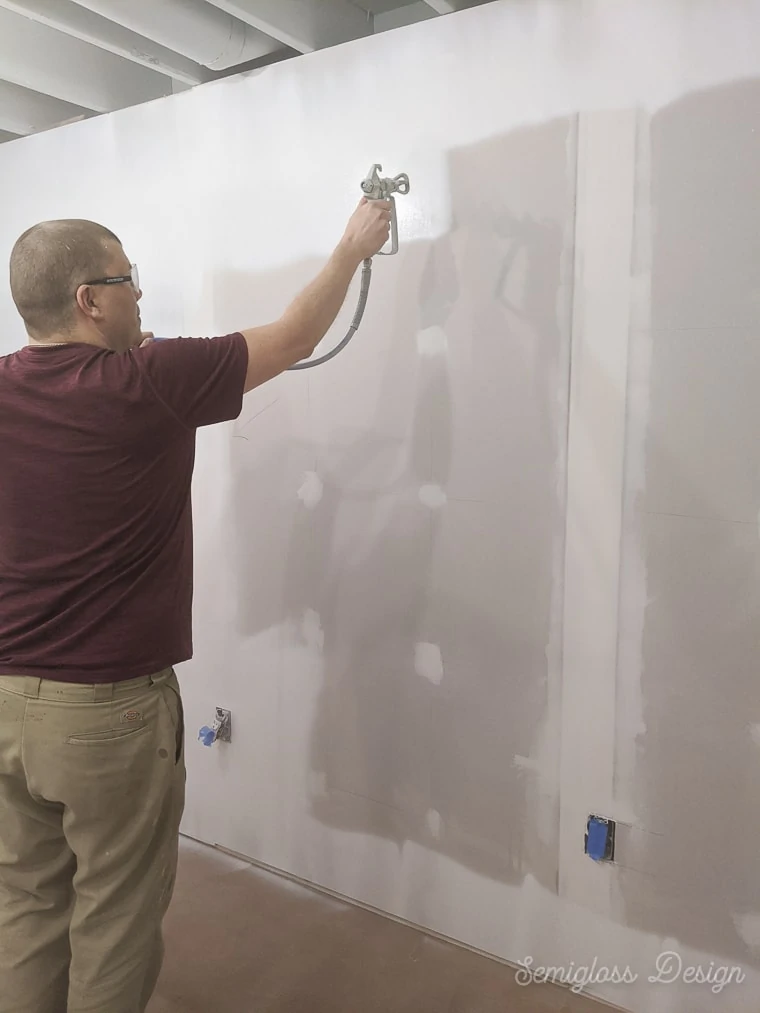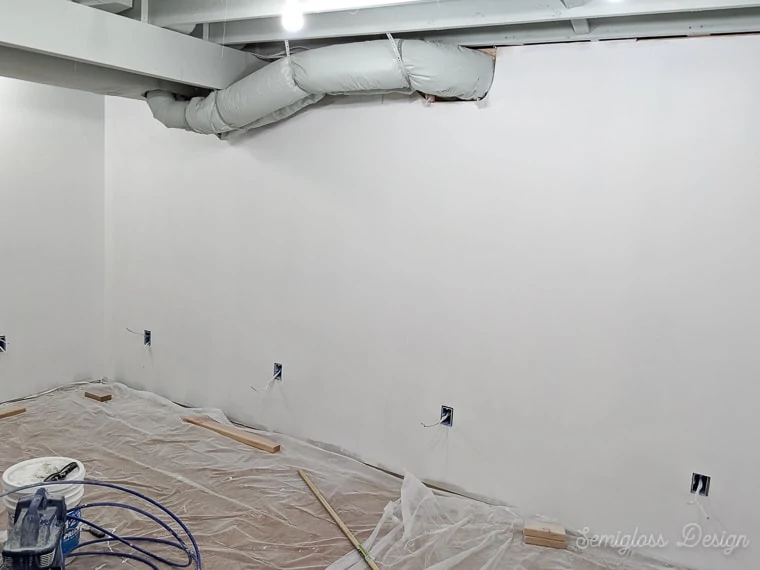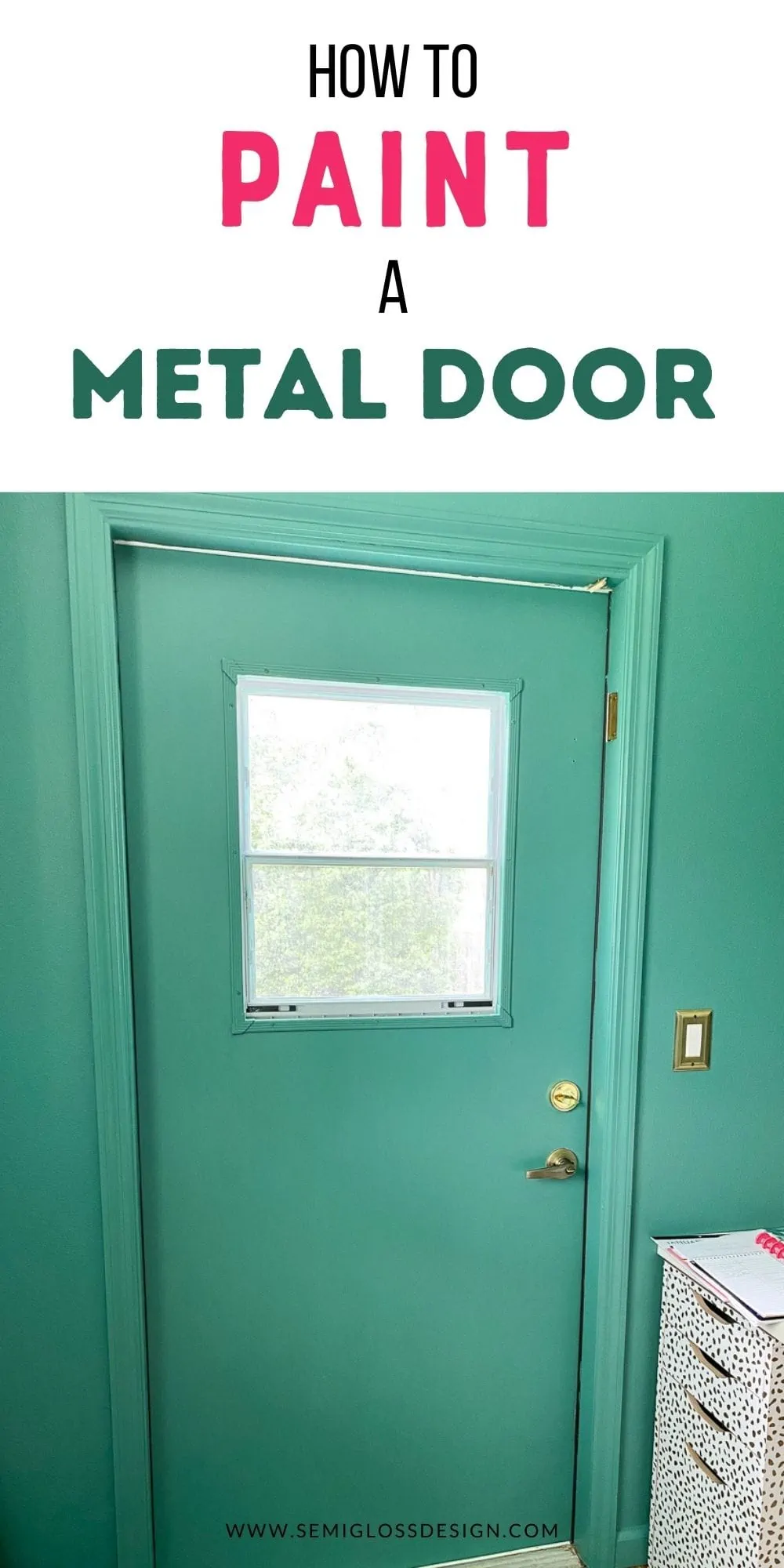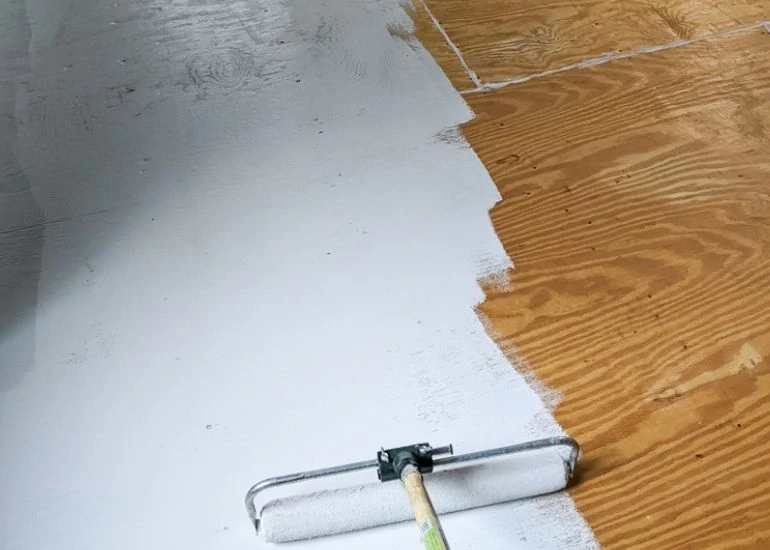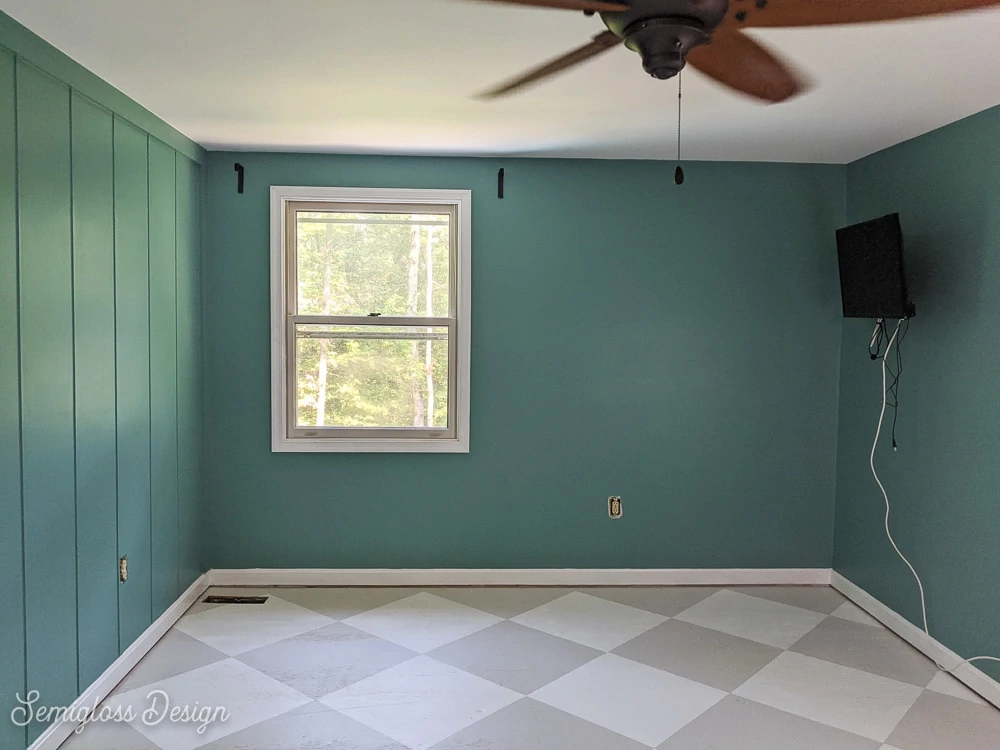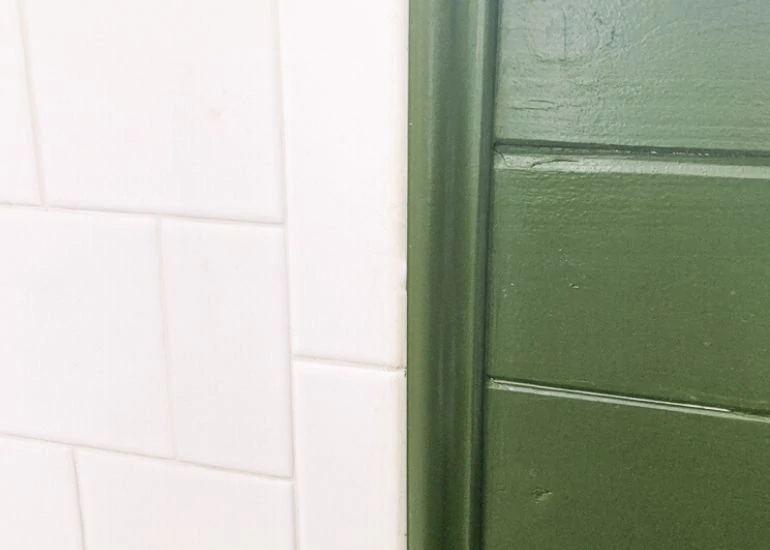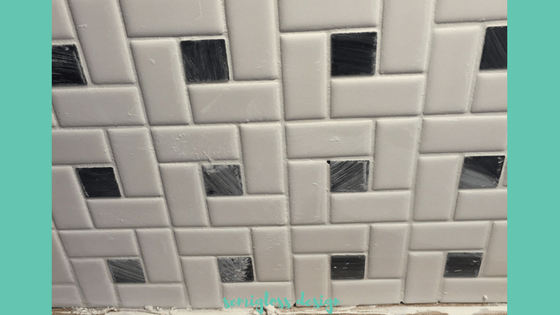Should You Use a Sprayer for Interior Walls?
Can you use a sprayer to paint interior walls? Yes, but the real question is, should you? Learn more about the process of painting wall using a sprayer.
We used our paint sprayer to paint our unfinished basement ceiling and it turned out great. So we wanted to try our hand at painting the walls as well. Find out how it went.
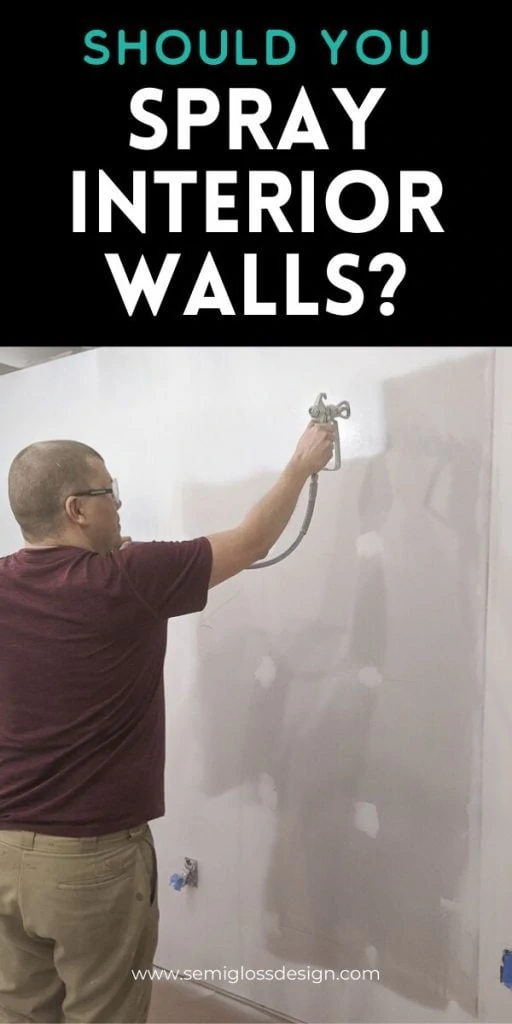
This post contains affiliate links. By purchasing an item through an affiliate link, I earn a small commission at no extra cost to you. As an Amazon Associate I earn from qualifying purchases.
Should You Paint Interior Walls with a Sprayer?
I’m going to go ahead and say that I think spraying the walls with a sprayer was a bit overkill.
While the painting went much faster, it was MUCH messier and clean up took just as long as it would have to paint with a roller and a brush. (I’ve learned to be a pretty tidy painter, so clean up is usually only putting stuff away and washing the brush.)
I’m also the type of person who loves painting. It’s my zen. Using a sprayer was the opposite of zen to me.
Paint got all over our freshly stained concrete floor and I’m still bummed about it.
However, there may be reasons that you want to spray your walls anyways.
Reasons to use a sprayer for walls
- Huge rooms. If your rooms are huge, it would probably save time to use a sprayer.
- Lots of rooms to paint. It would save time to paint an entire house, especially if you’re using one color.
- Painting exterior walls. This sprayer would be perfect to paint a something like a shed.
Using a Sprayer for Interior Walls
Supplies Needed:
- Drop cloths
- Sprayer
- Spray shield
- Paint
- Primer (if necessary)*
- Paint brush
- Roller on extended pole
- Protection (eye protection, respirator and gloves)**
*If your walls are new drywall, like mine were, they will need to be primed first. I really like this primer for walls to seal the joint compound and walls.
**Protection is so important when using a sprayer. Paint gets everywhere, so protect your eyes, lungs and skin. You should also wear long sleeves if possible.
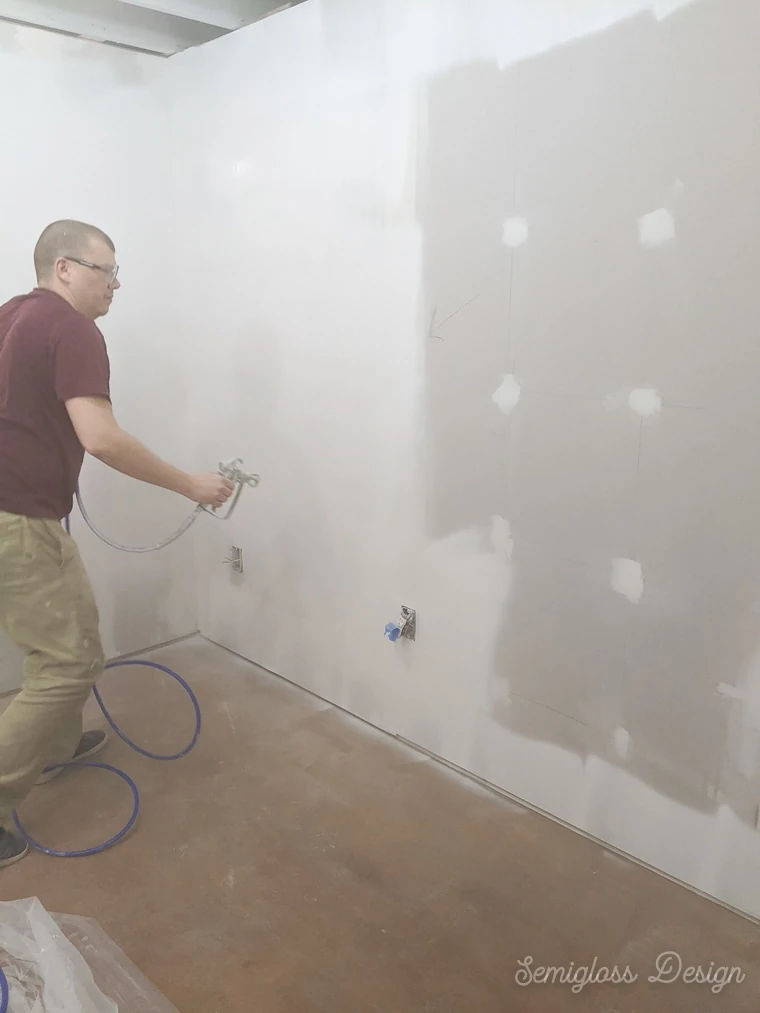
Directions
DON’T DO IT. Unless you like HUGE messes…
But if you decided to anyways, here’s what we did.
- Protect the floor with drop cloths. Tape off any outlets or anything that you don’t want painted.
- Adjust the flow as low as you can to paint. Test in an inconspicuous place when starting.
- Start spraying the primer first.
- Use a spray shield to protect the floor and previously painted ceiling.
- Have a brush and roller ready to get any drips.
- Let dry for about 2 hours.
- You may need to use a brush to get into tight spaces or along the bottoms and tops of the walls.
- Paint the 2nd coat, being careful of drips.
- Let dry for about 2 hours.
- Apply 1-2 coats of paint for the walls.
Tips to Make Spraying Walls Easier (and Less Messy)
- If using plastic drop cloths, tape it down to the wall to keep it from blowing away. When you’re finished, throw the plastic away.
- Cloth drop cloths are heavier, but still need something heavy around the edges to hold the drop cloth down. Let them dry flat and wash them as you normally do.
- Thinner coats work better because they drip less and dry faster.
- Consider using a smaller sprayer. We have a handheld airless sprayer and recently used it to paint our huge deck. It worked beautifully, even though we had to refill it a lot.
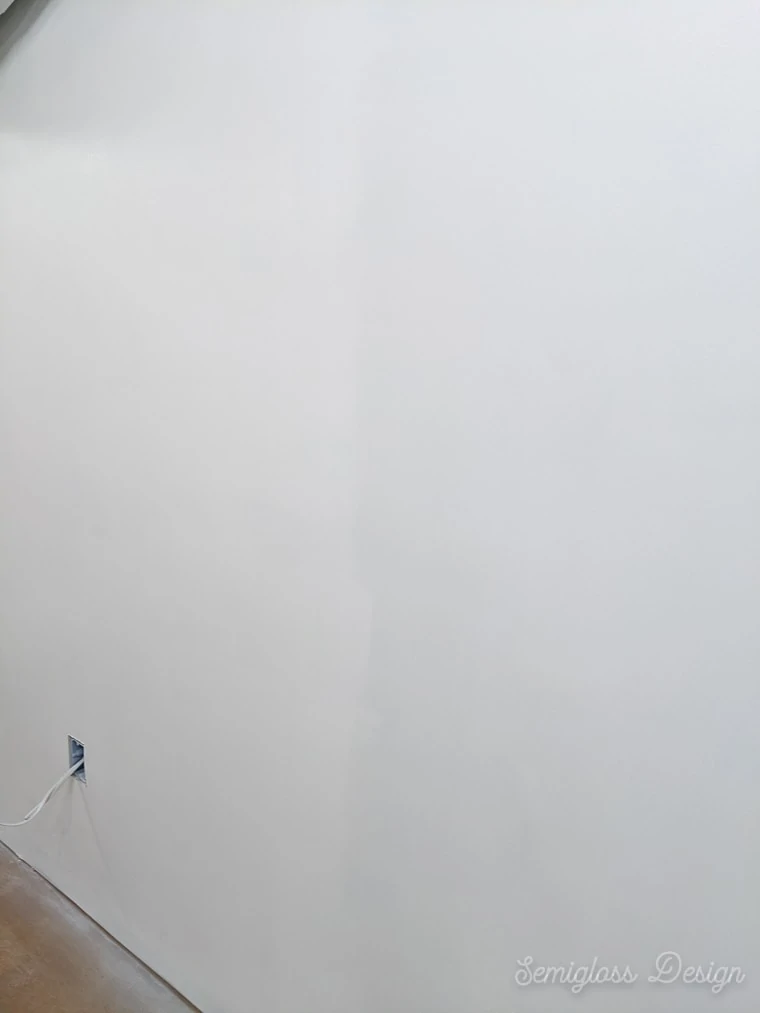
You might also like:
Pin for Later!
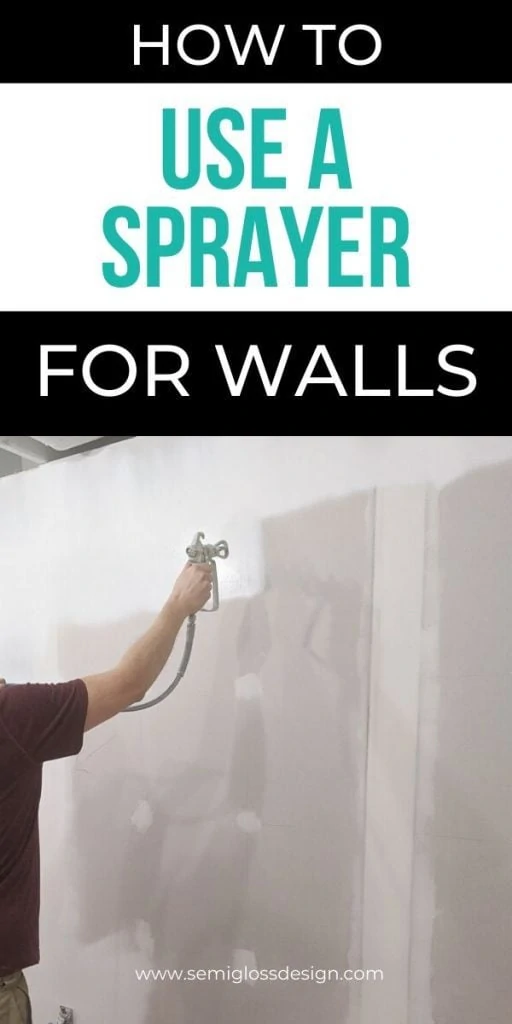

Emy is a vintage obsessed mama of 2 DIYer who loves sharing affordable solutions for common home problems. You don’t need a giant budget to create a lovely home. Read more…


